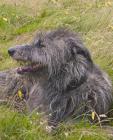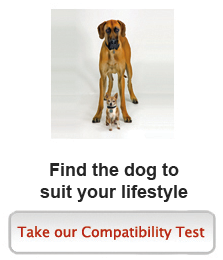Deerhound
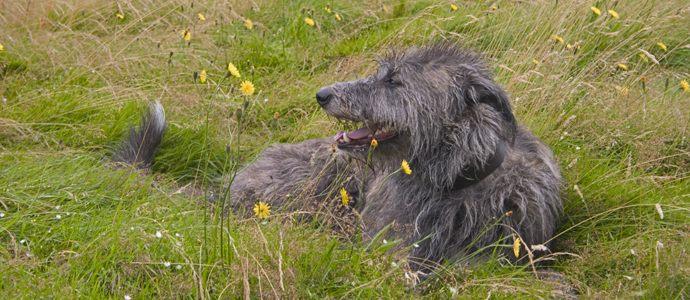
In my own words
Deerhound ‘Fancy a night in on the sofa?’
Please after you… I’ll follow up behind. My breed has impeccable manners with, if I do say so myself, a great attitude. To tip it all off we are also a hugely welcoming kind of canine. It may seem boastful to go on about all my fortunate traits but I am a dog that craves attention so it’s no wonder I’m barking on like this.
I love attention most when it comes form my family. I am most peaceful when we are all together. Hours can pass when I’m splayed on the sofa, they’re watching a movie and a roaring fire is keeping us all snug. If they don’t give me the attention I need I let out a little wine and they know to give my belly a pat and my head a rub.
I’m not all lazy though. I was bread to hunt deer and I still harbour urges to run across open fields and let my energy loose. I need some canine company as well as human. Thankfully, my owners are getting another Deerhound so there’ll be two of us! I can’t wait.
My ideal owner(s)
Active singles
Sporty types
Hikers & joggers
Families with older children
What they say about me
Impeccable manners
Good attitude
Welcoming
Warm and easygoing
Please read on, to find out more about me, and whether I will be someone you can be happy with for the next 12 years, or even longer!
Is this Deerhound for you?
Test your knowledge about the Deerhound
Information essential about the Deerhound
Kennel Club Group:
Hound
Size: Large
Weight Male 85-110 lbs Female 75-95 lbs
Height Male 30-32 inches Female 28 inches
Popularity:
The Deerhound is a member of the hound group. They were originally bred for hunting deer, today they are very popular companions and family pets. Moreover, the breed won Best In Show at the 2011 Westminster Kennel Club Dog Show (February 14-15, 2011.)
Breed History:
The Scottish Deer-hound, or simply the Deerhound, is a breed of hound (a sight hound), once bred to hunt the Red Deer by coursing.
The Scottish Deer hound has existed back to a time before recorded history. Its antecedents have been kept by the Scots and would have been used to help in providing part of their dietary requirements, namely from hoofed game (archaeological evidence supports this in the form of Roman pottery from around 1st Century AD found in Argyll which depicts the deer hunt using large rough hounds. These can be viewed at the National Museum of Scotland in Edinburgh). Other evidence can be found on standing stones from around the 7th century AD. In outward appearance, the Scottish Deer hound is similar to the Greyhound, but larger and more heavily boned. However, Deerhounds have a number of characteristics that set them apart. While not as fast as a Greyhound on a smooth, firm surface, once the going gets rough or heavy they can outrun a Greyhound. The environment in which they worked, the cool, often wet, and hilly Scottish Highland Glens, contributed to the larger, rough-coated appearance of the breed. The Deerhound is closely related to the Irish wolfhound and was the main contributor to the recovery of that breed when it was re-created at the end of the 19th century.
The Deerhound was bred to hunt Red Deer by “coursing”, and also “deer-stalking” until the end of the 19th century. With modern rifles and smaller deer-forests, slower tracking dogs were preferred to fast and far-running Deerhounds.
In coursing deer, a single Deerhound or a pair was brought as close as possible to red deer, then released to run one of them down by speed, which if successful would happen within a few minutes - rarely were there sustained chases.
With the eventual demise of the clan systems in Scotland, these hunting dogs became sporting animals for landowners and the nobility, but were also bred and hunted by common folk when feasible. As fast and silent hunters they made quick work of any game the size of a hare or larger and were highly regarded by nobility and poachers alike. One of the most precarious times in the breed’s history seems to have been towards the end of the nineteenth century, when many of the large Scottish estates were split into small estates for sporting purposes, and few then kept Deerhounds. The new fashion was for stalking and shooting, which required only a tracking dog to follow the wounded animal, using a collie or similar breed. Although a few estates still employed Deerhounds for their original work, the breed was left in the hands of a few enthusiasts who made them a show breed.
In Australia, Deerhounds have been used to hunt the kangaroo and wild boar. In North America they were also used to hunt wolves.
Character:
The Deerhound is gentle and extremely friendly. The breed is famed for being docile and eager to please, with a bearing of gentle dignity. It is however a true sight-hound which has been selected for generations to pursue game; consequently, most Deerhounds will be eager to chase. City dwellers with conviction, however, can keep the dog both healthy and happy, as long as they are willing to take their Deerhounds to nearby parks for lengthy runs and rigorous fetching sessions within these wider running courses. Young Deerhounds can sometimes, depending on the individual, be quite destructive especially when they are not given sufficient exercise; however, the average adult Deerhound may want to spend most of the day stretched out on the floor or a couch sleeping. They do require a stimulus, preferably another Deerhound, and a large area to exercise properly and frequently. They are gentle and docile indoors and are generally good around company and children (however they require supervision with young children due to their size).
Temperament:
The mellow, nap-taking adult Deerhound starts life as a somewhat rambunctious puppy. They tend to test authority, so offer them firm but positive training at a young age. Scottish Deerhound puppies are not suitable for apartment life, but a fully-grown canine will suffice, especially if there are several comfy couches.
Conformation:
The Deerhound resembles a rough-coated Greyhound. It is however, larger in size and bone. Height of males from 30 to 32 inches (75-80cm) or more, weight 85 to 110 pounds (40-50kg); height of females from 28 inches (70cm) upwards, weight from 75 to 95 pounds (35-43kg). It is one of the tallest sight hounds, with a harsh 3-4 inch long coat and mane, somewhat softer beard and moustache, and softer hair on breast and belly. The coat should be shaggy but never woolly. The hair on the head, chest and stomach should be much softer than the hair on the body, neck and legs. The Deerhound should have a long head, broad at the ears and tapering to the eyes, the muzzle tapers to the nose. The jaws should be strong and have a complete scissor bite. The eyes should be full and dark in colour with a soft look. The ears should be high set, small in size, folded back and semi erect. The neck should be very strong and quite long. The chest should be deep but not too narrow. The front legs should straight, broad and flat, the back legs should be broad, long and powerful. The feet should be firm and well knuckled. The tail should be long, slightly curved and be well covered with hair. It should almost reach the ground but should never be carried above the back.
Colour:
The harsh, wiry coat in modern dogs is only seen in self-coloured various shades of grey (blue-grey is preferred). Historically, Deerhounds also could be seen with true brindle, yellow, and red fawn coats, or combinations. 19th century Scottish paintings tend to indicate these colours were associated with a wire-haired coat, but, with show breeders preferring a longer coat, these genes now appear to be lost. A white chest and toes are allowed, and a slight white tip to the tail; a white blaze on the head or a white collar are not accepted. The eyes are dark, dark brown or hazel in colour.
Training:
The Deerhound is an intelligent dog that will learn quickly what is wanted and expected of it. They are obedient and eager to please and will acknowledge gentle and calm commands.
Care:
To prevent bloat, feed the Deerhound smaller meals throughout the day as opposed to one big meal. Its complicated-looking coat is in fact easy to groom: Just trim it occasionally and brush it regularly. Scottish Deerhounds compete in conformation, lure coursing, for some states of the USA, in hare coursing and coyote hunting, where it is still legal. A few are trained to succeed in obedience competition but few excel in it, and fewer still excel in dog agility or flyball because the courses and activities are generally designed for smaller dogs with lower body weight and a much shorter stride.
The Deerhound needs considerable exercise when young to develop properly and to maintain its health and condition. That does not mean it needs a large house to live in; however it should have regular access to free exercise in a fenced or otherwise "safe" area. Deerhounds should not be raised with access only to leash walking or a small yard, this would be detrimental to their health and development
Health:
The serious and common health issues include heart disease, some forms of cancer and bloat. Other possible concerns include gastric torsion, cardiomyopathy, osteosarcoma and hypothyroidism.
Possible Health Concerns In general the Deerhound is a relatively healthy dog with ‘bloat’ being one of the main causes of death. It is important that as puppies they are fed the correct diet to ensure the bones and joints form properly thus preventing any future problems. Deerhounds can be expected to live an average of 10 to 13 years and generally has large litters, 8 being the average, although litters of 17 are not unheard of.
You may also like:
If you like Deerhounds, you may be interested in breeds of the same size »
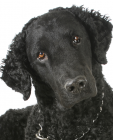

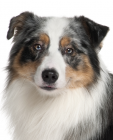
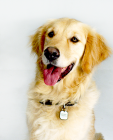
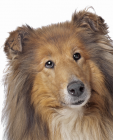
If you like Deerhounds, you may like other breeds with similar characteristics »
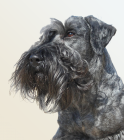
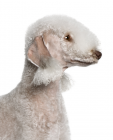
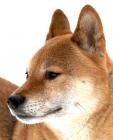

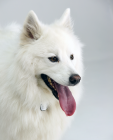
If you like Deerhounds, you may be interested in these other hound dogs »
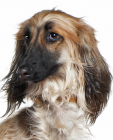
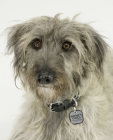
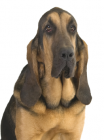
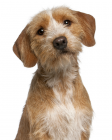

Advice on choosing your breed »
Find an animal shelter or rescue home where a Deerhound is waiting for a new home »
The following grid gives a fast track review, which covers all breeds. You can apply it to help you decide if a Deerhound is suitable for you, the environment where you live, your personality and your lifestyle. On the grid, 1= strongly disagree, and 5= strongly agree. For example, if you are looking for a dog to make a good walking companion, look down the list under Activities, and you will see that a Deerhound have lots of energy and are strong walkers, scoring 5. If you want a dog that is good for country living, look under Environment and you will see that Deehound are suited to country living, scoring 5. You might like to save or print off this section and keep it for reference while you check some other breeds before making your final choice.
Be the first to rate this breed »
|
*PLEASE NOTE: All our breed profiles are general, and all dogs are individuals. Always talk to the breeders and meet the owners you are buying from. Try to meet the dog and its parents if it is a puppy in their home environment.









